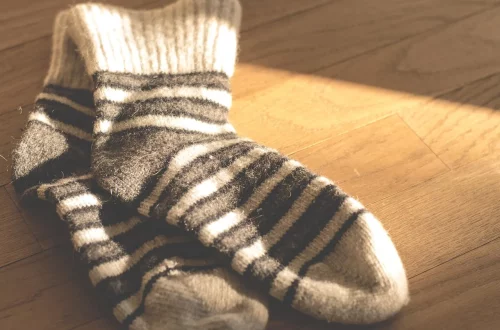
The Essential Guide to Ballet Shrugs for Dancers and Performers
Ballet has long been celebrated as a form of art that embodies grace, discipline, and expression. Dancers dedicate countless hours to mastering their techniques, perfecting their movements, and delivering performances that leave audiences in awe. Yet, while the spotlight often shines on the technical aspects of dance, there are many elements surrounding it that contribute significantly to a dancer’s overall presentation and comfort. One such element is the ballet shrug.
The ballet shrug, a versatile garment designed to enhance the dancer’s outfit, serves not only a practical purpose but also adds a layer of elegance to the overall appearance. It offers warmth during rehearsals, provides a stylish accessory for performances, and can even help in establishing a dancer’s personal style. As dancers navigate the rigors of training and performance, the importance of choosing the right shrug cannot be overstated. From fabric selection to fit and style, every detail plays a critical role in how a dancer feels and performs.
In the following sections, we will explore various aspects of ballet shrugs, including their significance in a dancer’s wardrobe, tips for selecting the perfect one, and how to incorporate them into different dance styles. This guide aims to equip dancers and performers with the knowledge they need to make informed choices about this essential accessory.
The Importance of Ballet Shrugs in Dance
Ballet shrugs play a pivotal role in a dancer’s wardrobe, serving multiple functions that go beyond mere aesthetics. One of the primary benefits of a shrug is its ability to provide warmth. Dancers often spend long hours in rehearsal studios, which can be chilly, especially during the winter months. A well-designed shrug can keep a dancer’s muscles warm, reducing the risk of injury and enhancing flexibility. This is crucial, as warm muscles are less prone to strains and pulls, allowing for smoother movements and better performance.
Moreover, shrugs can help create a polished look for performances. When dancers take the stage, every detail matters, and a beautifully fitted shrug can elevate an outfit, adding sophistication and style. It can also serve as a statement piece, allowing dancers to express their individuality and creativity. Many dancers choose shrugs that reflect their personality, opting for vibrant colors, intricate designs, or even personalized embellishments.
Another significant aspect of ballet shrugs is their versatility. They can be worn over leotards and tights, paired with skirts or pants, and even layered with other dance garments. This adaptability makes them suitable for various dance styles, from classical ballet to contemporary dance, jazz, and beyond. Dancers can easily transition from warm-up sessions to performances while maintaining comfort and style.
In addition to their practical benefits, ballet shrugs foster a sense of community among dancers. Many dancers share tips on where to find the best shrugs, discuss their favorite brands, and even exchange or gift shrugs within their dance families. This camaraderie enhances the overall dance experience, further solidifying the importance of shrugs in the dance world.
Choosing the Right Fabric and Fit
When selecting a ballet shrug, the choice of fabric is paramount. Dancers should prioritize materials that are both comfortable and functional. Common fabrics for ballet shrugs include cotton, polyester, and blends that offer stretch and breathability. Cotton is a popular choice due to its softness and ability to wick moisture, ensuring that dancers remain dry during intense rehearsals. Polyester blends, on the other hand, often provide durability and a sleek look, making them ideal for performances.
The fit of a ballet shrug is equally important. A well-fitted shrug should allow for freedom of movement without being too loose or restrictive. Dancers should look for styles that hug the shoulders and arms without being overly tight, as this can hinder movement. It’s essential to try on different sizes and styles to determine which one feels the most comfortable and flattering. Additionally, considering the length of the shrug is crucial. Some dancers prefer cropped styles that showcase their waistlines, while others may opt for longer designs that offer more coverage.
In terms of style, there are various options available, ranging from classic open-front designs to wrap styles and even long-sleeved versions. Each style serves a different purpose and can be chosen based on personal preference and the specific needs of a performance or rehearsal. For instance, a wrap-style shrug can be easily adjusted for added warmth, while a long-sleeved option may provide extra coverage during colder months.
Furthermore, the color and design of the shrug can also impact a dancer’s overall look. Classic colors like black, white, and nude are versatile and can complement a wide range of dance outfits. However, dancers should also feel free to experiment with bolder colors and patterns that reflect their personality and artistic expression. Ultimately, the right fabric and fit will not only enhance a dancer’s comfort but also contribute to their confidence on stage.
Incorporating Ballet Shrugs into Different Dance Styles
Ballet shrugs are not limited to classical ballet; they can be seamlessly integrated into various dance styles, each offering unique opportunities for expression. In ballet, shrugs are often worn during warm-ups and rehearsals to maintain muscle warmth. However, they can also be styled for performance. For instance, a delicate lace shrug can add an ethereal quality to a classical ballet costume, enhancing the overall visual impact of the performance.
In contemporary dance, shrugs can be used to create dynamic shapes and silhouettes. Dancers may choose oversized or asymmetrical designs that add an element of surprise to their movements. This style allows for greater freedom of expression and can enhance the narrative of a performance. Pairing a shrug with flowing trousers or skirts can result in a visually striking ensemble that captivates the audience.
For jazz and musical theater, shrugs can serve as a fun accessory that complements vibrant costumes. Dancers can experiment with bold colors, glitter, or sequins to reflect the energy of the performance. A shrug can also be a functional piece that allows for quick costume changes, providing a seamless transition between numbers.
In addition to style considerations, the practical use of shrugs varies across dance genres. For hip-hop dancers, a shrug can be a stylish way to layer an outfit while allowing for unrestricted movement. In this genre, shrugs might take on a more casual appearance, often paired with streetwear elements.
Regardless of the dance style, the key to incorporating shrugs effectively is to ensure that they enhance the dancer’s movements rather than hinder them. Dancers should aim for a cohesive look that ties together their outfit while allowing for the fluidity and expression inherent in dance.
Care and Maintenance of Ballet Shrugs
Maintaining the quality and appearance of ballet shrugs is crucial for dancers who rely on them regularly. The longevity of these garments largely depends on proper care and maintenance. Each fabric type may have specific washing instructions, but there are general guidelines that apply to most ballet shrugs.
First and foremost, dancers should always check the care label before washing. Most shrugs can be machine washed, but it’s advisable to use a gentle cycle with cold water to prevent shrinking or damage. For delicate fabrics like lace or silk, hand washing may be the best option to preserve the integrity of the material. Using a mild detergent can help maintain the fabric’s softness and color.
After washing, it’s important to dry the shrug properly. Air drying is often recommended to avoid heat damage from dryers, which can cause shrinking or warping. Dancers should lay their shrugs flat on a clean towel or hang them to dry away from direct sunlight, which can fade colors over time.
Ironing may also be necessary, especially for shrugs that are made from wrinkle-prone fabrics. A low-temperature setting is advisable, and using a cloth between the iron and the fabric can prevent scorching. Additionally, storing ballet shrugs correctly can help maintain their shape. Hanging them in a closet or using garment bags can prevent creasing and preserve their appearance.
Regular inspections for wear and tear are also important. Dancers should check for loose threads, seams, or any signs of damage that may require mending. Addressing these issues promptly can prolong the life of the shrug and ensure it remains a reliable part of the dancer’s wardrobe.
By following these care tips, dancers can keep their ballet shrugs looking fresh and new, ensuring they are always prepared for rehearsals and performances.
In conclusion, ballet shrugs are an indispensable accessory for dancers, providing warmth, style, and versatility across various dance genres. The importance of selecting the right fabric, fit, and style cannot be overstated, as these factors significantly influence a dancer’s comfort and confidence. Proper maintenance is also crucial to ensure the longevity and appearance of these garments. By understanding the significance of ballet shrugs and how to effectively incorporate them into their dance routines, performers can elevate their overall experience and style.
**Disclaimer:** This article is for informational purposes only and should not be considered medical advice. For any health concerns or medical issues, please consult a qualified healthcare professional.




